Gardening in Small Spaces: Balcony Garden Ideas
In today's fast-paced world, where space is often at a premium, the idea of having a lush garden may seem like a distant dream for those living in apartments or small homes. But fear not! With a little creativity and some innovative thinking, your balcony can transform into a vibrant green oasis that not only beautifies your space but also offers a sanctuary for relaxation and tranquility. Imagine stepping out onto your balcony and being greeted by a burst of colors, fragrant herbs, and perhaps even the sound of buzzing bees. It’s not just about aesthetics; it’s about creating a personal retreat right outside your door. So, how do you turn that small balcony into a garden paradise? Let’s dive into some practical ideas that will help you maximize your space and cultivate your green thumb!
When it comes to small spaces, vertical gardening is your best friend! By utilizing the walls and upward space, you can create a stunning garden that doesn’t take up much floor area. Think of it as stacking your garden in layers, much like a tiered cake. You can install vertical planters, which are not only functional but can also serve as beautiful wall art. Wall-mounted shelves can hold pots of flowers or herbs, while trellises can support climbing plants like peas or beans. This approach not only maximizes your gardening area but also adds dimension and interest to your balcony. Imagine a lush green wall filled with vibrant blooms or fragrant herbs—it's like having your own little slice of nature right at home!
Choosing the right plants for your balcony garden is crucial. Not all plants thrive in small spaces, and factors like sunlight, climate, and maintenance requirements will play a significant role in your selection. For instance, if your balcony gets a lot of sunlight, consider vibrant flowers like petunias or geraniums. If you’re more into low-maintenance greenery, opt for succulents or ferns that can thrive in partial shade. Remember, it's essential to choose plants that not only fit your space but also your lifestyle. A busy individual may prefer hardy plants that require minimal care, while someone with more time might enjoy nurturing a variety of delicate flowers. The key is to create a balance that suits your needs and enhances your outdoor space.
One of the best parts of having a balcony garden is the opportunity to grow your own herbs and edible plants. Imagine stepping outside to snip fresh basil for your pasta or mint for your refreshing drink. Not only do these plants beautify your space, but they also provide you with fresh ingredients that can elevate your culinary creations. Easy-to-grow options like basil, mint, and tomatoes are perfect for beginners. They’re not just functional; they add a delightful aroma to your balcony and attract beneficial pollinators. Plus, growing your own food can be incredibly rewarding, giving you a sense of accomplishment every time you harvest your produce!
Container gardening is a fantastic way to grow plants in small spaces. The beauty of containers is that you can choose various shapes, sizes, and materials to fit your style. From colorful pots to rustic wooden boxes, the options are endless! When selecting containers, consider drainage; it’s essential for healthy plants. A good soil mix is equally important—look for a lightweight potting mix that retains moisture but drains well. And don’t forget about watering techniques! Self-watering containers can be a lifesaver, ensuring your plants get the moisture they need without the risk of overwatering.
Understanding seasonal planting is vital for maintaining a vibrant balcony garden year-round. Different plants thrive in different seasons, and by rotating your crops, you can ensure continuous blooms and harvests. For instance, spring is perfect for planting vibrant flowers like pansies, while summer is ideal for tomatoes and peppers. As fall approaches, consider planting cool-weather crops like kale and spinach. This way, your balcony garden will always be alive with color and productivity, no matter the time of year!
Incorporating decorative elements can significantly enhance the aesthetic appeal of your balcony garden. Think about adding cozy garden furniture where you can sit and enjoy your green retreat. String lights can create a magical ambiance in the evening, while decorative pots can add character to your plant arrangements. You can even include small sculptures or garden art to give your space a personal touch. The goal is to create an inviting atmosphere that feels like an extension of your home, encouraging you to spend more time outdoors.
Regular maintenance is essential for a thriving balcony garden. Just like any living space, your plants need care and attention. Watering, pruning, and pest control are key components of plant health. Make it a habit to check your plants regularly for signs of stress or disease. A quick trim here and there can encourage new growth and keep your plants looking their best. And don’t forget about pests! Keeping an eye out for unwanted visitors will help maintain the health of your garden.
Effective watering techniques can significantly impact plant health. Overwatering is a common mistake that can lead to root rot, while underwatering can cause plants to wilt. Discovering methods like drip irrigation or using self-watering containers can ensure your plants receive adequate moisture without the risk of drowning them. It’s all about finding that sweet spot where your plants can thrive!
Managing pests in a small garden can be challenging, but it’s not impossible! Explore organic pest control methods, such as introducing beneficial insects like ladybugs or using natural repellents. Preventive measures, like keeping your plants healthy and well-spaced, can also deter pests. By staying vigilant and proactive, you can keep your balcony garden healthy and free from unwanted intruders.
- What can I grow on a small balcony? You can grow a variety of plants, including herbs, flowers, and even small vegetables. Consider what fits your space and sunlight availability.
- How do I maintain my balcony garden? Regular watering, pruning, and pest control are essential. Make a maintenance schedule to keep everything in check!
- Can I use any container for gardening? Not all containers are suitable; ensure they have drainage holes and are made from materials that won’t leach harmful chemicals into the soil.
- What are the best plants for a sunny balcony? Consider sun-loving plants like petunias, geraniums, and tomatoes, which thrive in bright sunlight.

Maximizing Vertical Space
When it comes to creating a stunning balcony garden, space can often feel like a limiting factor. However, with a bit of creativity and the right techniques, you can transform even the tiniest balcony into a lush green retreat. One of the most effective ways to achieve this is by . Imagine your balcony as a blank canvas, waiting to be painted with vibrant colors and textures through plants that climb, cascade, and flourish upwards!
Vertical gardening techniques are not just practical; they can also add a unique aesthetic appeal to your space. Consider using vertical planters, which are designed to hold multiple plants in a compact area. These can be wall-mounted or freestanding, allowing you to choose the best fit for your balcony layout. You can even create a living wall by attaching pockets or shelves to your balcony railing or walls, filled with a variety of plants. This approach not only saves floor space but also creates a stunning visual impact.
Another fantastic option is to incorporate trellises. These structures provide support for climbing plants, allowing them to grow vertically instead of spreading outwards. Think of climbing vines like sweet peas or morning glories; they can transform a plain wall into a tapestry of color and life. Additionally, you can intertwine herbs like climbing beans or even tomatoes, making your garden both beautiful and functional.
Don't forget about the use of shelves! Wall-mounted shelves can serve as perfect spots for smaller pots, creating a multi-layered garden effect. You can mix and match pots of different sizes and colors, creating an eye-catching display that draws the eye upwards. This not only maximizes your planting area but also gives your balcony a cozy, curated feel.
To give you an idea of how to arrange your vertical garden, here's a simple table outlining some popular vertical gardening options:
| Vertical Gardening Option | Best Plants | Benefits |
|---|---|---|
| Vertical Planters | Succulents, Herbs | Space-saving, Easy to maintain |
| Trellises | Climbing Vines, Tomatoes | Supports climbing plants, Adds height |
| Wall-mounted Shelves | Small Pots, Flowers | Creates layers, Decorative |
By implementing these vertical gardening strategies, you not only make the most out of your limited space but also create a dynamic garden that can change with the seasons. Just think about how refreshing it would be to step out onto your balcony and be greeted by a vibrant display of greenery, flowers, and even your favorite herbs! So, roll up your sleeves and get ready to transform your balcony into a vertical paradise!
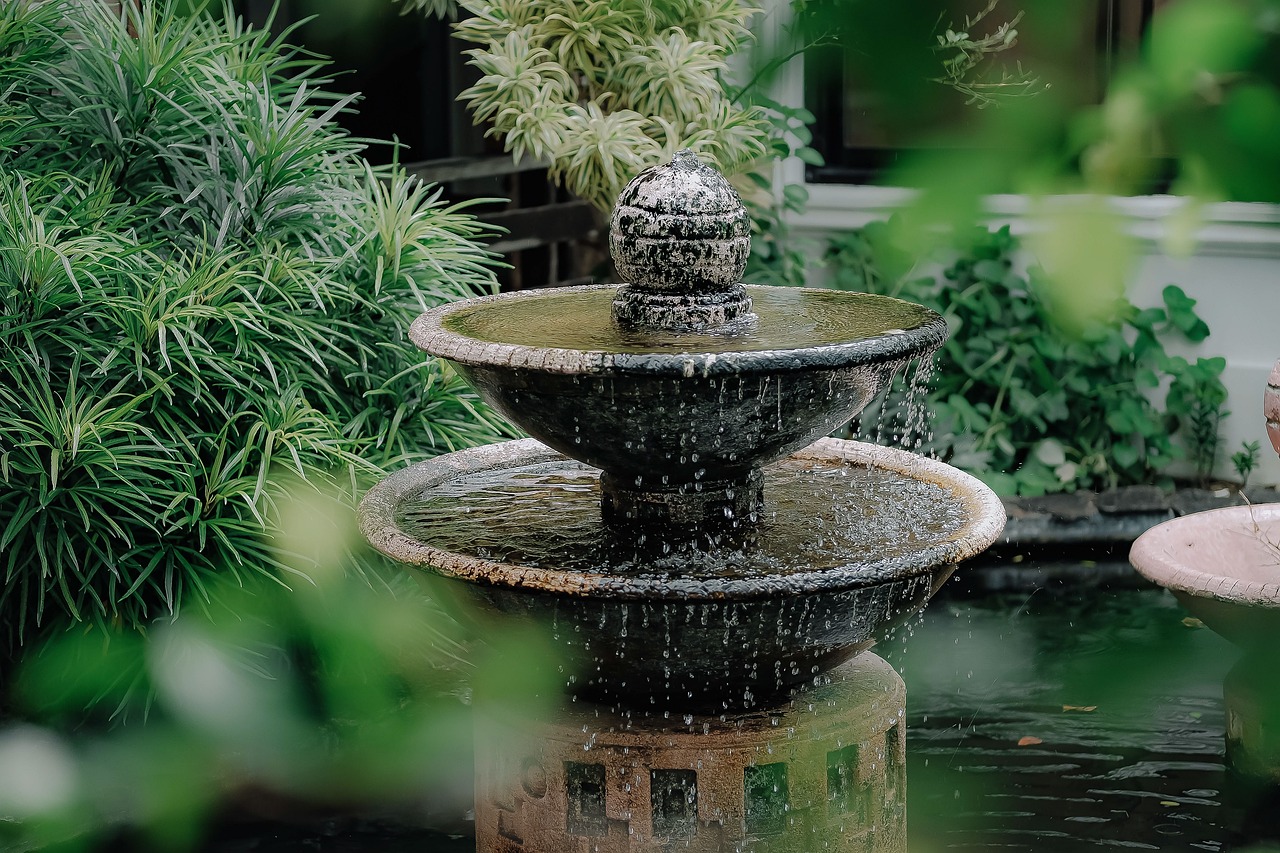
Choosing the Right Plants
When it comes to creating a stunning balcony garden, is absolutely crucial. Imagine stepping out onto your balcony and being greeted by a riot of colors and fragrances. But how do you achieve that in a limited space? The answer lies in understanding your environment and selecting plants that will thrive in it. Consider factors such as sunlight, climate, and maintenance requirements to curate a garden that not only looks beautiful but is also easy to care for.
First and foremost, assess the amount of sunlight your balcony receives throughout the day. Is it drenched in sunlight, or does it bask in the shade? This will determine the types of plants you can grow. For sun-soaked balconies, you might want to consider vibrant flowers like petunias or geraniums, which thrive in bright light. On the other hand, if your space is more shaded, opt for plants like ferns or hostas, which flourish in lower light conditions.
Next, think about your local climate. If you live in a region with harsh winters, consider planting perennials that can withstand the cold, or bring your delicate annuals indoors during the frost. Alternatively, if you’re in a warmer climate, you might find that succulents and cacti are not only trendy but also low-maintenance options that can thrive in the heat.
Another important aspect to consider is the maintenance level of the plants you choose. If you’re someone who travels often or has a busy lifestyle, opting for low-maintenance plants is a smart choice. Here are some fantastic options to consider:
- Succulents: These hardy plants require minimal watering and can tolerate neglect.
- Herbs: Basil, mint, and rosemary are not only easy to grow but also useful in the kitchen.
- Ornamental Grasses: They add texture and movement to your garden while requiring little care.
Moreover, don’t forget about the aesthetic appeal! Combining different plant heights and textures can create a visually striking arrangement. For instance, taller plants like sunflowers can provide a backdrop for shorter blooms, while trailing plants like ivy can cascade beautifully from hanging pots. The key is to think of your balcony as a canvas where you can paint with nature.
In summary, choosing the right plants for your balcony garden involves a mix of understanding your environment and selecting varieties that suit your lifestyle. By considering sunlight, climate, and maintenance needs, you can create a lush, inviting space that reflects your personal style. So, are you ready to transform your balcony into a green paradise?
Here are some common questions people have when it comes to selecting the right plants for their balcony gardens:
- What kind of soil is best for balcony plants? A well-draining potting mix is ideal, often enriched with organic matter to support plant growth.
- How often should I water my balcony plants? This depends on the plant type and weather conditions, but generally, check the soil moisture regularly.
- Can I grow vegetables on my balcony? Absolutely! Many vegetables, such as tomatoes and peppers, thrive in containers and can be grown on balconies.

Herbs and Edibles
Growing herbs and edible plants on your balcony not only enhances the beauty of your garden but also provides you with fresh ingredients right at your fingertips. Imagine stepping out onto your balcony and snipping off some fragrant basil for your pasta or picking ripe cherry tomatoes for a salad. It’s like having a mini grocery store just outside your door! The best part is that many herbs and edibles are surprisingly easy to grow, making them perfect for small spaces.
When choosing which herbs and edible plants to grow, consider your culinary preferences and the amount of sunlight your balcony receives. Most herbs thrive in sunny spots, so if your balcony gets at least 6 hours of sunlight a day, you’re in luck! Here are some fantastic options that are not only easy to care for but also pack a punch in flavor:
- Basil: A staple in Mediterranean cooking, basil loves the sun and can be grown in pots or window boxes.
- Mint: This fragrant herb is perfect for tea or garnishing desserts. Mint can spread quickly, so it's best to plant it in a container.
- Cherry Tomatoes: These sweet little gems are perfect for snacking and can thrive in pots, especially if you choose dwarf varieties.
- Parsley: A versatile herb that can be used in a variety of dishes, parsley grows well in partial shade.
- Chives: With a mild onion flavor, chives are perfect for sprinkling on salads and soups.
Container gardening is a fantastic method for growing these herbs and edibles. You can use almost any container as long as it has good drainage. Consider using terracotta pots, hanging baskets, or even repurposed items like old buckets or wooden crates. Just ensure that the containers are large enough to accommodate the root systems of your plants. Using high-quality potting soil enriched with organic matter will give your herbs the nutrients they need to thrive.
To keep your balcony garden flourishing, it’s essential to maintain a consistent watering schedule. Herbs typically prefer to be kept moist but not soggy. A good rule of thumb is to check the top inch of soil; if it feels dry, it’s time to water. Additionally, incorporating a slow-release organic fertilizer can provide your plants with the nutrients they need without the risk of chemical buildup.
As you nurture your balcony garden, you'll discover that these herbs and edibles not only enhance your meals but also bring a delightful fragrance and vibrant colors to your space. So, why not transform your balcony into a culinary haven? With just a bit of effort, you can enjoy the satisfaction of growing your own food, and trust me, there’s nothing quite like the taste of homegrown herbs!
Q1: What are the best herbs to grow in a small balcony garden?
A1: Some of the best herbs for small spaces include basil, mint, parsley, chives, and cilantro. They are compact, easy to grow, and can thrive in containers.
Q2: How often should I water my balcony herbs?
A2: The frequency of watering depends on the climate and the type of container used. Generally, check the top inch of the soil; if it’s dry, it’s time to water. Ensure your pots have drainage holes to prevent waterlogging.
Q3: Can I grow vegetables on my balcony?
A3: Absolutely! Many vegetables can be grown in containers, including cherry tomatoes, peppers, and even lettuce. Just be sure to select varieties that are suitable for container gardening.

Container Gardening
Container gardening is a fantastic solution for those looking to cultivate a garden in limited spaces, such as balconies or small patios. Imagine transforming your little nook into a vibrant green sanctuary, where every inch counts! With the right containers, you can grow a variety of plants, from beautiful flowers to delicious vegetables, all while adding charm to your outdoor area. The beauty of container gardening lies in its versatility and ease of management. You can choose from various container types, including pots, hanging baskets, and even repurposed items like old crates or buckets. The options are as limitless as your creativity!
When selecting containers, it's essential to consider materials that not only suit your style but also promote healthy plant growth. Common materials include:
- Plastic: Lightweight and affordable, perfect for beginners.
- Terracotta: Offers excellent breathability but can dry out quickly.
- Wood: Provides a rustic look but requires treatment to prevent rot.
- Metal: Stylish and durable, but can heat up quickly in the sun.
Soil choice is another crucial aspect of container gardening. Using a high-quality potting mix is vital, as it ensures good drainage and aeration. Consider a mix that contains components like peat moss, vermiculite, and compost to provide your plants with the nutrients they need. Remember, the right soil can make all the difference in the success of your garden!
Watering techniques also play a significant role in keeping your container garden thriving. Since containers can dry out faster than traditional garden beds, it’s essential to monitor moisture levels regularly. You might want to incorporate self-watering containers, which use a reservoir system to keep the soil consistently moist without the risk of overwatering. Alternatively, using a drip irrigation system can help automate the process, ensuring your plants get just the right amount of water.
Lastly, don’t forget about the importance of drainage! Proper drainage holes at the bottom of your containers are essential to prevent waterlogging, which can lead to root rot. If you’re using decorative pots without drainage, consider placing a layer of gravel at the bottom or using a liner to help manage excess water.
In conclusion, container gardening opens up a world of possibilities for urban dwellers and gardening enthusiasts alike. With the right containers, soil, and care, you can create a stunning balcony garden that not only beautifies your space but also provides you with fresh herbs and vegetables right at your fingertips!
Q: What size containers should I use for my balcony garden?
A: The size of your containers depends on the type of plants you want to grow. Smaller plants like herbs can thrive in pots as small as 6-8 inches, while larger plants like tomatoes may require containers that are at least 12-18 inches in diameter.
Q: How often should I water my container plants?
A: This varies based on the type of plants, the size of the container, and environmental conditions. A good rule of thumb is to check the top inch of soil; if it feels dry, it’s time to water. During hot weather, you may need to water daily.
Q: Can I grow vegetables in containers?
A: Absolutely! Many vegetables thrive in containers. Just ensure you choose varieties suited for smaller spaces, such as cherry tomatoes, peppers, or lettuce.
Q: How can I protect my container garden from pests?
A: Regularly inspect your plants for signs of pests, and use organic pest control methods like neem oil or insecticidal soap if needed. Additionally, introducing beneficial insects like ladybugs can help keep pest populations in check.
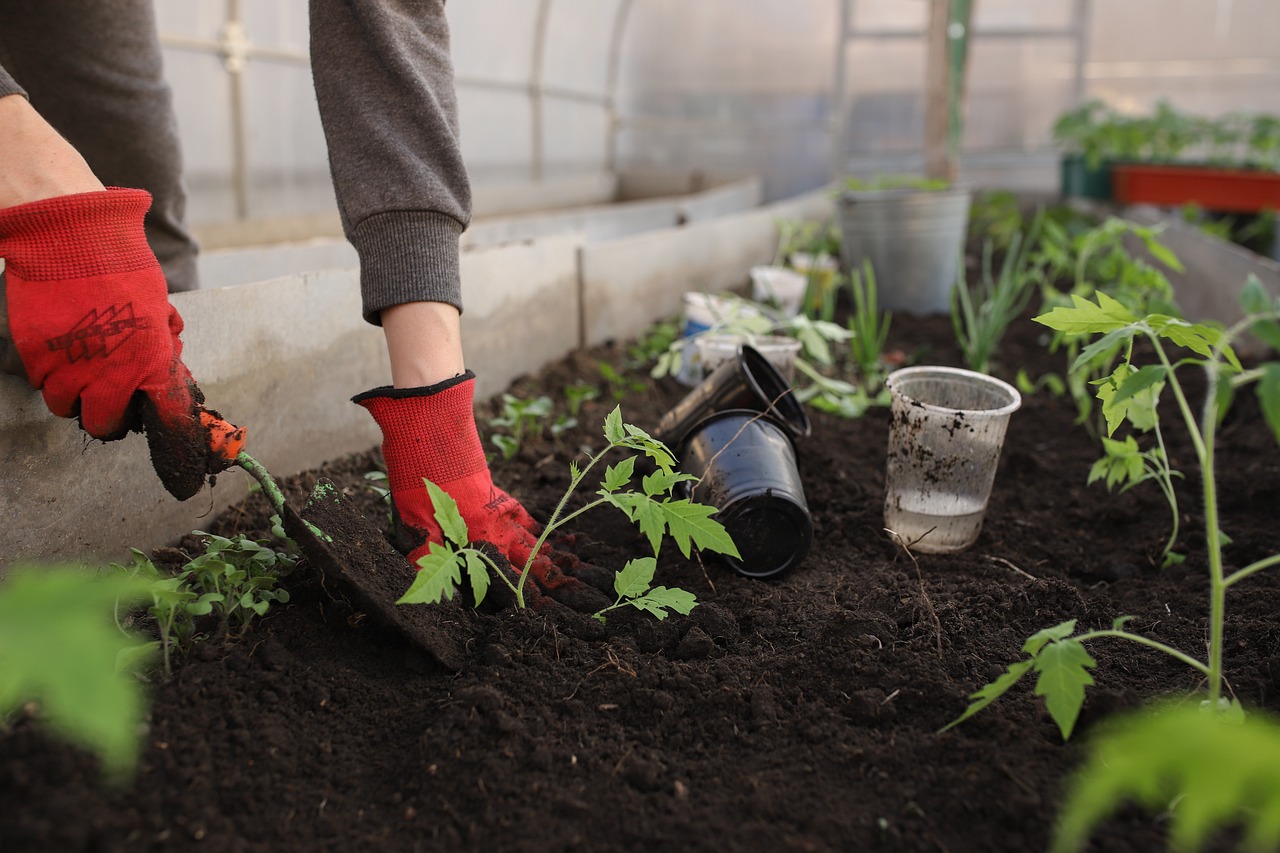
Seasonal Planting
Understanding is like having a secret key to unlock the full potential of your balcony garden. Imagine being able to enjoy fresh blooms and harvests throughout the year, transforming your small space into a vibrant oasis that changes with the seasons. But how do you achieve this delightful cycle? It all starts with knowing which plants thrive in each season and planning accordingly.
In the spring, as the frost melts away and the sun begins to warm the air, it's the perfect time to plant a variety of flowers and vegetables. Think of bright, cheerful pansies and daffodils that can bring life back to your balcony after a long winter. You can also start sowing seeds for crops like lettuce, peas, and radishes, which love the cooler temperatures. The key here is to select plants that can handle the fluctuating temperatures of early spring.
When summer rolls around, your balcony garden can truly come alive! This is the season for vibrant colors and bountiful harvests. You might want to consider planting tomatoes, peppers, and herbs like basil and cilantro. These plants thrive in the warm sun and can be used in your kitchen for fresh meals. Remember to ensure they have enough water, as the summer heat can dry them out quickly.
As the leaves begin to change in autumn, it's time to think about the transition. You can plant cool-weather crops like kale, carrots, and garlic, which can be harvested later in the year or even stored for the winter months. Additionally, consider adding some ornamental plants like chrysanthemums, which can add a splash of color to your balcony as the days grow shorter.
Finally, in winter, while many plants may go dormant, you can still enjoy your balcony garden by incorporating hardy plants that can withstand the cold. Think about evergreens and winter-blooming plants like hellebores. You can also use this time to prepare your garden for the upcoming spring by cleaning up dead foliage and planning your next planting schedule.
Here’s a quick reference table for seasonal planting:
| Season | Plants to Grow |
|---|---|
| Spring | Pansies, Daffodils, Lettuce, Peas, Radishes |
| Summer | Tomatoes, Peppers, Basil, Cilantro |
| Autumn | Kale, Carrots, Garlic, Chrysanthemums |
| Winter | Evergreens, Hellebores |
By planning your balcony garden around the seasons, you can create a dynamic and thriving green space that not only looks beautiful but also provides you with fresh produce all year long. So, grab your gardening gloves and get ready to embrace the rhythm of nature!
- What are the best plants for a balcony garden? It depends on your climate, but herbs, tomatoes, and flowers like pansies are great options for small spaces.
- How can I keep my balcony garden thriving in winter? Choose hardy plants and ensure proper care, such as watering and protection from harsh winds.
- Can I grow vegetables in containers? Absolutely! Many vegetables thrive in containers, making them perfect for balcony gardening.
- How often should I water my balcony plants? It varies by plant and weather, but generally, check the soil moisture regularly and water when it feels dry.
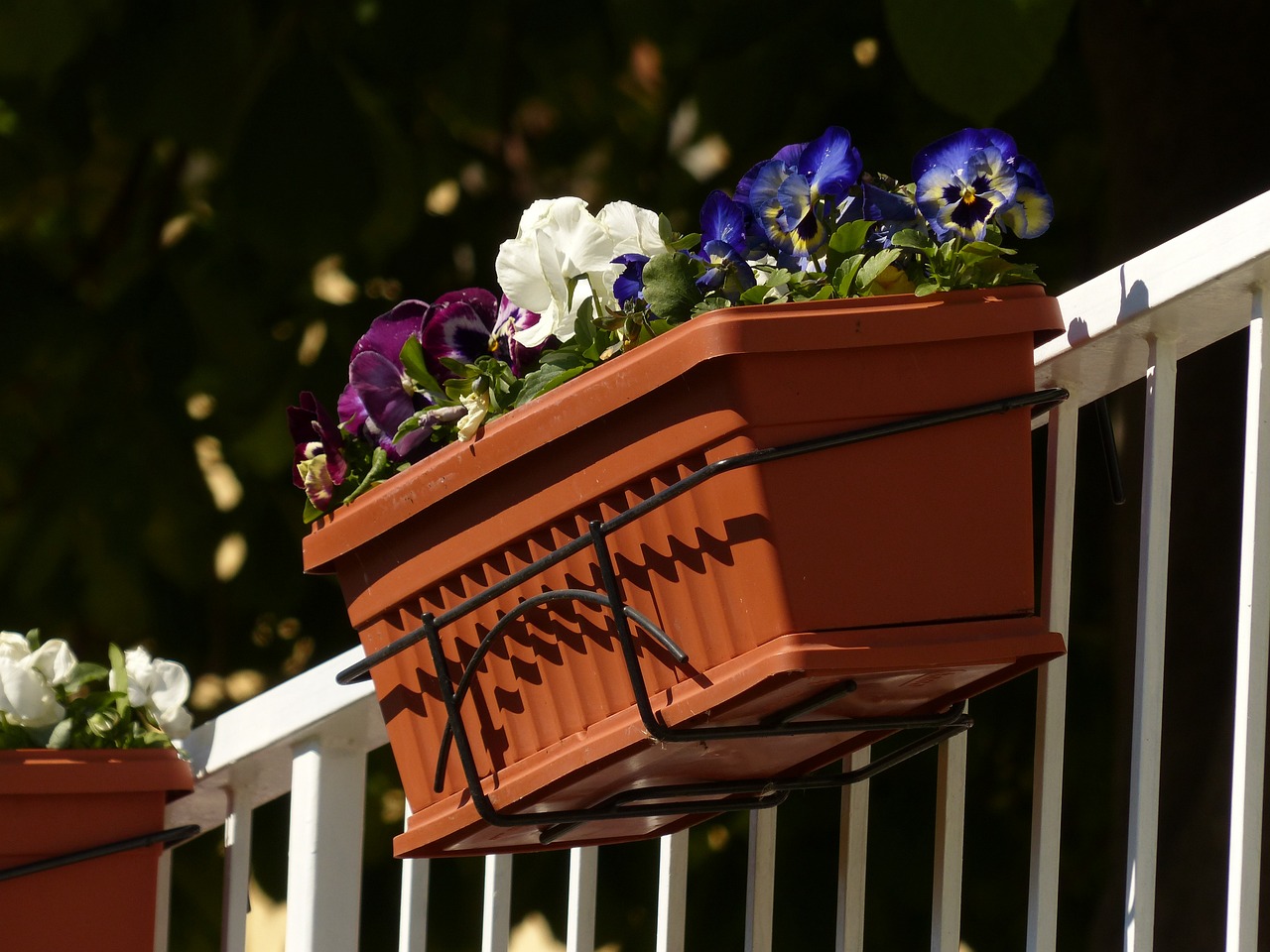
Decorative Elements
When it comes to creating a stunning balcony garden, the you choose can truly make or break the overall vibe. Think of your balcony as an extension of your home, a cozy nook where you can unwind and connect with nature. By incorporating various decorative features, you can transform your small space into a vibrant oasis that reflects your personality while enhancing the beauty of your plants.
One of the first things to consider is garden furniture. A small bistro table and a couple of chairs can invite you to enjoy your morning coffee amidst the greenery. Opt for lightweight furniture that can be easily moved or stored, allowing you to adapt your space for entertaining or relaxing. Imagine sipping a cup of tea surrounded by lush foliage—sounds delightful, right?
Lighting is another crucial aspect that can elevate your balcony garden. String lights or solar-powered lanterns can create a magical ambiance in the evening. Picture twinkling lights cascading over your plants, casting soft shadows and enhancing their natural beauty. You can even use LED grow lights if your balcony doesn’t receive enough sunlight, ensuring your plants thrive while adding a modern touch to your decor.
Don't overlook the importance of decorative pots and planters. They come in various shapes, sizes, and colors, allowing you to express your style. For instance, terracotta pots offer a rustic charm, while vibrant ceramic pots can add a pop of color. Consider using vertical planters or hanging pots to save space and create a layered effect. This not only maximizes your growing area but also adds depth and interest to your garden.
To further enhance the atmosphere, you might want to incorporate natural elements such as stones, pebbles, or driftwood. These can be used as decorative ground cover or as part of a unique centerpiece. Imagine a small rock garden nestled among your plants, creating a serene, zen-like environment. You could even add a small water feature, like a fountain or a birdbath, to attract wildlife and create soothing sounds that complement your garden.
Finally, don’t forget the power of artwork and personal touches. Hanging wall art, decorative mirrors, or even wind chimes can add a personal flair to your balcony garden. These elements can reflect your interests and make your space feel uniquely yours. Just think about how a beautifully painted piece can draw the eye and spark conversation when guests visit.
In summary, decorative elements play a vital role in shaping the ambiance of your balcony garden. By carefully selecting furniture, lighting, pots, natural features, and personal touches, you can create a stunning outdoor space that invites relaxation and enjoyment. So, go ahead and let your creativity flow—your balcony garden is waiting to be transformed!
- What plants are best for a balcony garden? Look for plants that thrive in pots and can tolerate the conditions of your balcony, such as herbs, succulents, and small flowering plants.
- How often should I water my balcony plants? Watering frequency depends on the type of plants and the climate. Generally, check the soil moisture and water when the top inch feels dry.
- Can I grow vegetables on my balcony? Absolutely! Many vegetables like tomatoes, peppers, and lettuce can thrive in containers on your balcony.
- How can I protect my balcony garden from pests? Regularly inspect your plants, use organic pest control methods, and keep your garden clean to prevent infestations.
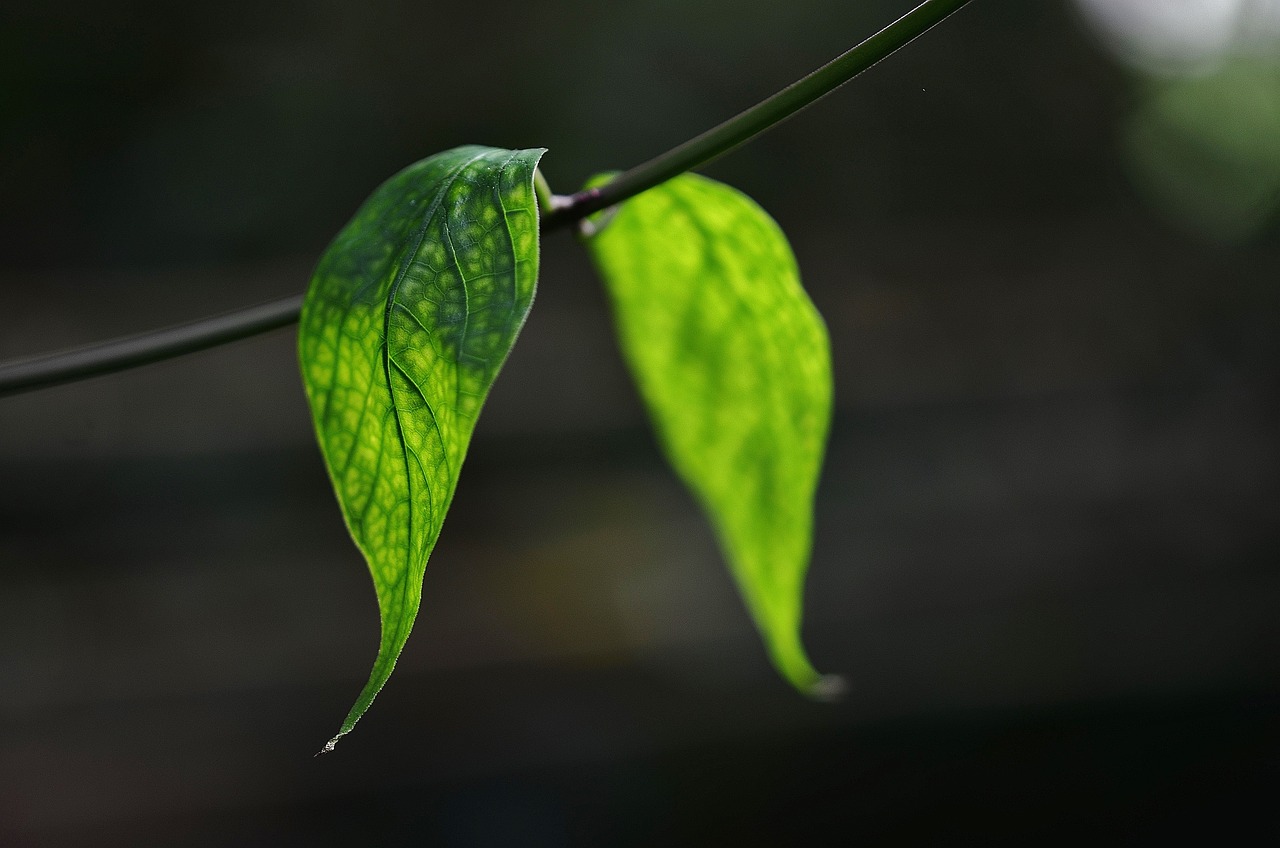
Maintenance Tips
Maintaining a balcony garden might seem daunting, but with the right approach, it can be an enjoyable and rewarding experience. Just like any living thing, your plants need care and attention to thrive. Think of your balcony garden as a small ecosystem, where every element plays a crucial role. Regular maintenance is essential not only for plant health but also for the overall aesthetic of your green space. So, how do you keep your balcony looking vibrant and flourishing? Let’s dive into some practical tips!
First and foremost, watering is key. It’s vital to understand that different plants have different watering needs. For instance, succulents prefer dry conditions, while leafy greens like spinach thrive in moist soil. A good rule of thumb is to check the top inch of the soil; if it feels dry, it’s time to water. You might consider using a drip irrigation system or self-watering containers, especially if you have a busy schedule. These methods can help ensure your plants receive consistent moisture without the risk of overwatering, which can lead to root rot.
Next, let’s talk about pruning. Regular pruning is not just about aesthetics; it encourages healthy growth and can prevent diseases. Think of it as giving your plants a haircut! Removing dead or yellowing leaves allows the plant to redirect its energy towards new growth. Additionally, if you’re growing herbs, frequent harvesting can actually promote bushier plants. Don’t be afraid to get your hands dirty and trim those plants back when necessary.
Another crucial aspect of maintenance is pest control. Unfortunately, pests can be a nuisance in any garden, and small spaces are no exception. The good news is that there are several organic methods you can employ to keep those unwanted visitors at bay. For example, introducing beneficial insects like ladybugs can help control aphid populations. You can also use neem oil or insecticidal soap as a natural remedy to deter pests without harming your plants. Regularly inspecting your plants for any signs of infestation can help you catch problems early before they escalate.
Lastly, don’t forget about fertilization. Your plants need nutrients to grow strong and healthy, and container gardening can deplete soil nutrients faster than traditional gardening. Depending on the types of plants you’re growing, you might want to incorporate a balanced, slow-release fertilizer into your potting mix. Additionally, consider using compost or organic fertilizers to enrich the soil naturally. Keeping a fertilization schedule can make a significant difference in the vitality of your balcony garden.
To wrap things up, let’s address some common questions about balcony garden maintenance:
- How often should I water my balcony plants? This depends on the type of plants you have and the weather conditions. Generally, check the soil moisture regularly and water when the top inch feels dry.
- What should I do if I notice pests on my plants? Inspect your plants closely and consider using organic pest control methods like neem oil or introducing beneficial insects.
- How can I ensure my plants get enough nutrients? Regularly fertilize your plants with a balanced fertilizer and incorporate compost into your soil to provide essential nutrients.
- Is pruning necessary for all plants? While not all plants require pruning, it is beneficial for many, especially herbs and flowering plants, to promote healthy growth.
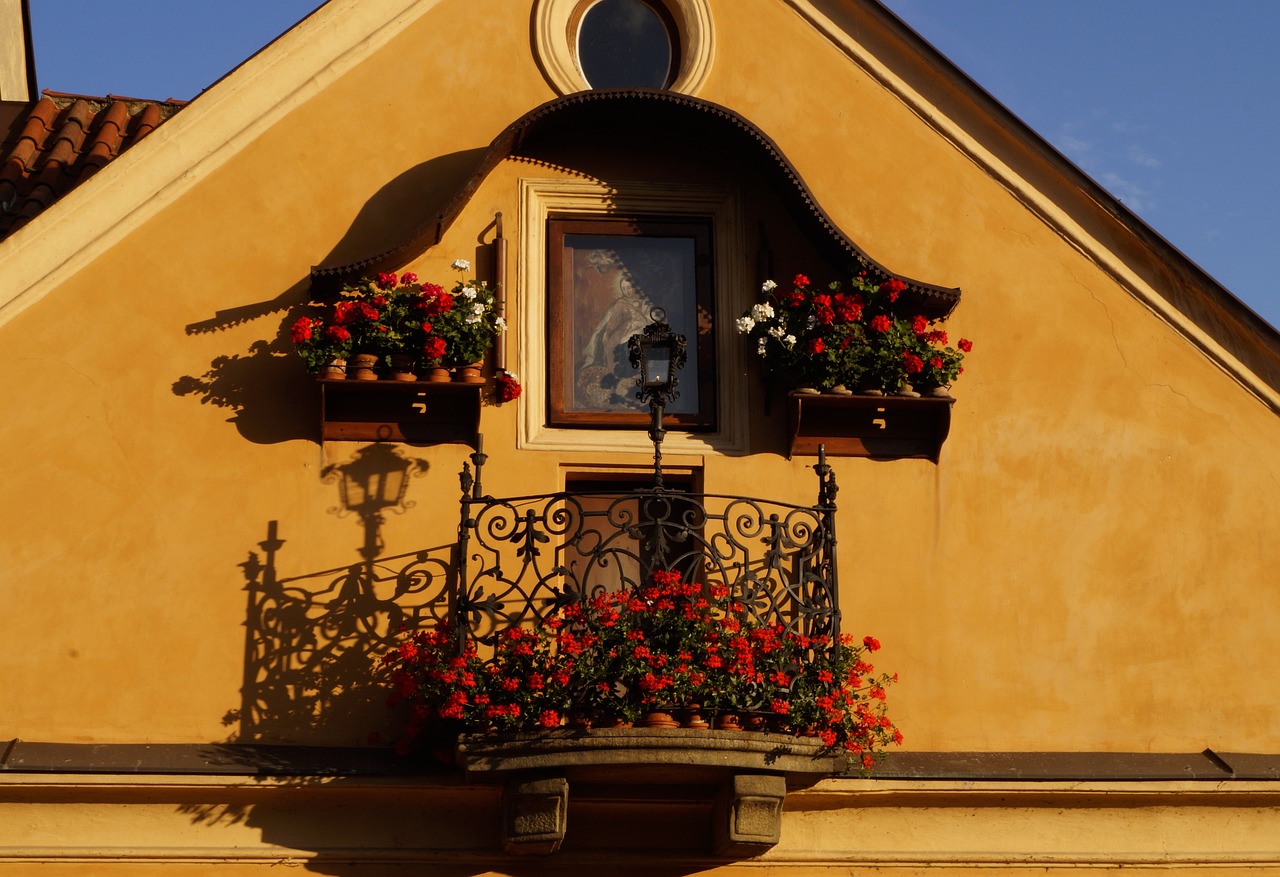
Watering Techniques
When it comes to nurturing your balcony garden, play a pivotal role in ensuring your plants thrive. Think of watering as the lifeblood of your garden; without it, even the most vibrant plants can wilt and fade. So, how do you strike the perfect balance? Here are some effective methods to consider:
First off, drip irrigation is an excellent choice for small spaces. This system delivers water directly to the plant roots, minimizing waste and ensuring that each plant receives just the right amount of moisture. Imagine a gentle rain shower, where each drop is perfectly placed, nourishing the roots without soaking the leaves. This technique not only conserves water but also reduces the risk of fungal diseases that can arise from wet foliage.
Another popular option is using self-watering containers. These ingenious pots come with a reservoir at the bottom, allowing plants to absorb water as needed. It’s like having a personal butler for your plants, providing hydration without the need for constant attention. Just fill the reservoir, and let your plants sip away! This method is particularly beneficial for busy urban dwellers who may not have the time for daily watering.
However, regardless of the method you choose, it’s essential to monitor the moisture levels in your containers. Overwatering can be just as harmful as underwatering. A simple way to check is by sticking your finger about an inch into the soil. If it feels dry, it’s time to water. If it’s still moist, hold off for a day or two. This simple test can save your plants from drowning!
Moreover, the time of day you water can significantly impact your plants' health. Early morning is often the best time to water your balcony garden. During this time, the sun is not too harsh, allowing the moisture to soak in before the heat of the day evaporates it. Think of it as giving your plants a refreshing drink before they face the day’s challenges.
To sum it up, here are some key points to remember for effective watering:
- Consider drip irrigation for efficient watering.
- Use self-watering containers to simplify your routine.
- Check soil moisture with a simple finger test.
- Water in the early morning for optimal absorption.
By implementing these watering techniques, you can create a flourishing balcony garden that not only looks great but also thrives with health and vitality. Remember, a little attention to detail goes a long way in transforming your small space into a lush green paradise!
Q: How often should I water my balcony garden?
A: The frequency of watering depends on several factors, including the type of plants, the weather, and the size of your containers. Generally, it's good to check the soil moisture every few days and water when the top inch feels dry.
Q: Can I use tap water for my plants?
A: Yes, tap water is typically fine for most plants. However, if your water is heavily chlorinated, it might be beneficial to let it sit out for 24 hours before using it, allowing the chlorine to dissipate.
Q: What should I do if I notice my plants are wilting?
A: Wilting can be a sign of both overwatering and underwatering. Check the soil moisture; if it’s dry, give your plants a good drink. If it’s soggy, consider reducing your watering frequency and improving drainage.

Pest Management
Managing pests in your balcony garden can feel like an uphill battle, but it doesn’t have to be! The key is to stay one step ahead of those pesky intruders. You might be wondering, "How can I protect my plants without resorting to harsh chemicals?" Well, the good news is that there are plenty of organic pest control methods that can keep your garden thriving while being kind to the environment.
First off, it's essential to understand the common pests that can invade your little green paradise. Aphids, spider mites, and whiteflies are just a few of the culprits that can wreak havoc on your plants. But fear not! By keeping a close eye on your plants and acting quickly, you can minimize damage. Regularly inspecting your plants not only helps you catch any infestations early but also allows you to appreciate the beauty of your garden. It's like being a detective in your own little world!
One effective method of pest management is the use of companion planting. This involves growing certain plants together that can naturally deter pests. For example, planting marigolds alongside your vegetables can repel aphids and nematodes. It's like having a secret army of plant protectors! Additionally, herbs like basil and mint can help ward off unwanted visitors while enriching your culinary adventures.
Another strategy to consider is introducing beneficial insects into your garden. Ladybugs and lacewings are natural predators of aphids and can help maintain a healthy ecosystem in your balcony garden. You can attract these helpful insects by planting flowers like dill, fennel, or yarrow. Think of it as inviting your friends over for a party – the more, the merrier, right?
For those times when pests do show up uninvited, having a few homemade remedies on hand can be a lifesaver. A simple mixture of water and a few drops of dish soap can effectively combat soft-bodied insects like aphids. Just spray it directly onto the affected areas and watch those pests disappear! Additionally, neem oil is another fantastic organic option that disrupts the life cycle of many pests without harming your plants.
Of course, prevention is always better than cure. Keeping your balcony garden clean and tidy can go a long way in deterring pests. Remove any dead leaves or debris, as these can attract unwanted guests. Also, make sure your plants are healthy and well-nourished; strong plants are less likely to fall victim to pests. Think of it as giving your plants the best chance to thrive in a competitive world!
In summary, managing pests in your balcony garden is all about being proactive and using natural methods. By understanding the pests you might encounter, implementing companion planting, attracting beneficial insects, and having homemade remedies at your disposal, you can create a thriving green oasis free from chemical treatments. So, roll up your sleeves, put on your gardening gloves, and get ready to enjoy a pest-free paradise!
- What are some common pests in balcony gardens?
Common pests include aphids, spider mites, and whiteflies. Regular inspections can help catch them early.
- How can I naturally deter pests?
Using companion planting and attracting beneficial insects can help keep pests at bay.
- What homemade remedies can I use for pest control?
A mixture of water and dish soap or neem oil can be effective against many pests.
- How can I prevent pests from invading my balcony garden?
Keep your garden clean, remove debris, and ensure your plants are healthy to deter pests.
Frequently Asked Questions
- What are some effective ways to maximize vertical space in a balcony garden?
Utilizing vertical gardening techniques can truly transform your small balcony into a lush paradise. You can install vertical planters, use wall-mounted shelves, or add trellises to grow climbing plants. These methods not only save floor space but also create a stunning visual effect. Think of it as building a green wall that adds depth and beauty to your space!
- Which plants are best suited for small balcony gardens?
When selecting plants for a balcony garden, it's crucial to choose varieties that thrive in limited spaces and specific conditions. Herbs like basil and mint, along with compact vegetables such as cherry tomatoes and peppers, are fantastic choices. They not only flourish in containers but also provide fresh ingredients for your meals!
- How can I effectively maintain my balcony garden?
Regular maintenance is key to a thriving balcony garden. Make sure to establish a consistent watering schedule, prune your plants as needed, and keep an eye out for pests. Simple tasks like removing dead leaves and checking soil moisture can go a long way in keeping your garden healthy and vibrant!
- What are some tips for watering plants in a small garden?
Effective watering techniques can make a huge difference in plant health. Consider methods such as drip irrigation systems or self-watering containers to ensure your plants receive the right amount of moisture. These techniques help prevent overwatering, which can be a common issue in small gardens!
- How can I manage pests in my balcony garden?
Pest management can be tricky in a small space, but there are plenty of organic methods to keep your plants safe. Use natural repellents like neem oil, introduce beneficial insects, or create barriers with row covers. Staying proactive and regularly inspecting your plants can help you catch any issues before they become a major problem!
- What decorative elements can enhance my balcony garden?
Adding decorative elements can elevate the aesthetic of your balcony garden. Consider incorporating comfortable garden furniture, string lights for a cozy ambiance, and unique decorative pots to showcase your plants. These touches create an inviting atmosphere that makes your garden a perfect retreat!
- How do I choose the right containers for my balcony garden?
Choosing the right containers is essential for successful container gardening. Look for pots with proper drainage to prevent waterlogging, and consider materials like terracotta or fiberglass that retain moisture well. The size of the container should also match the plants you intend to grow; larger plants need more space to thrive!
- Can I grow seasonal plants on my balcony?
Absolutely! Understanding seasonal planting allows you to enjoy a vibrant balcony garden year-round. Research which plants flourish in each season and plan your garden accordingly. This way, you can ensure continuous blooms and fresh harvests, bringing life to your balcony throughout the year!



















